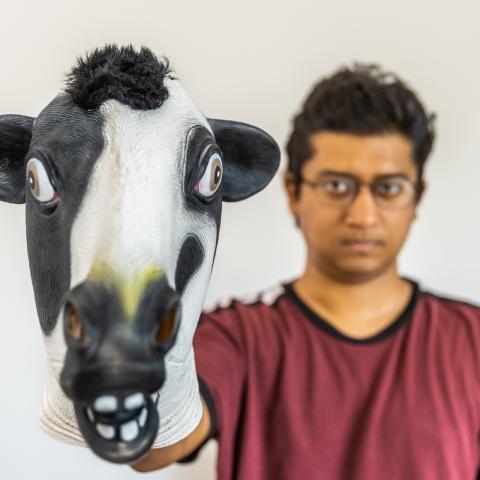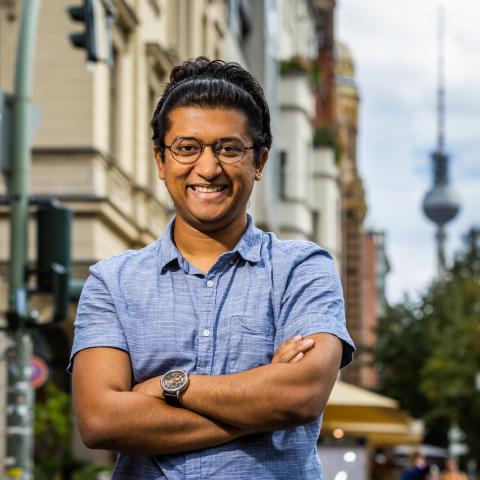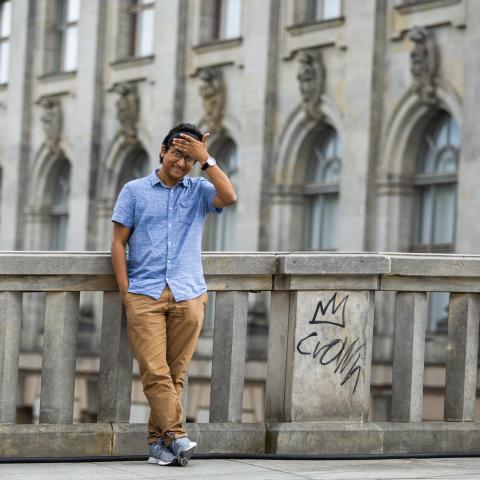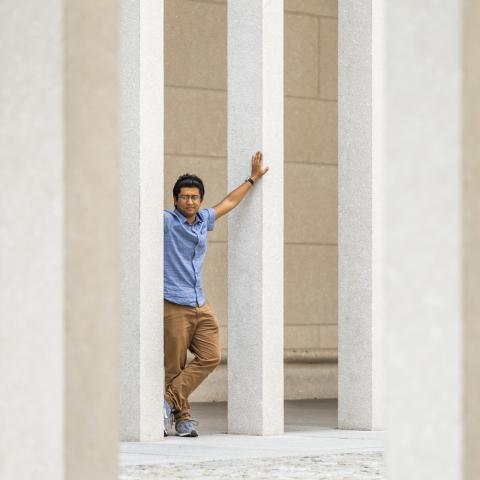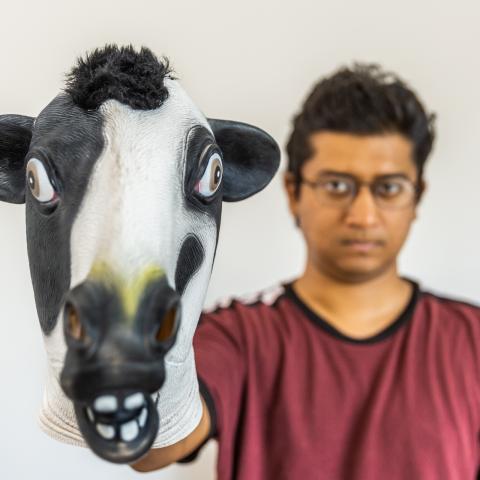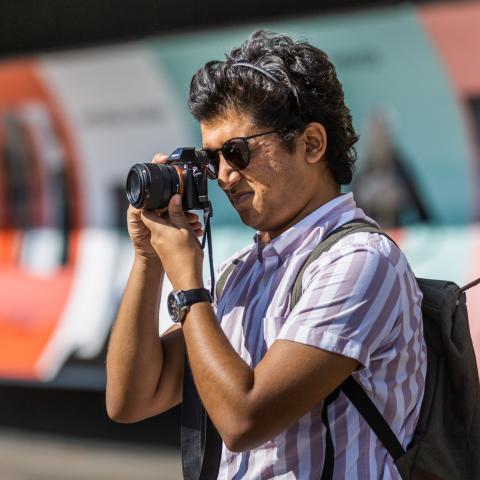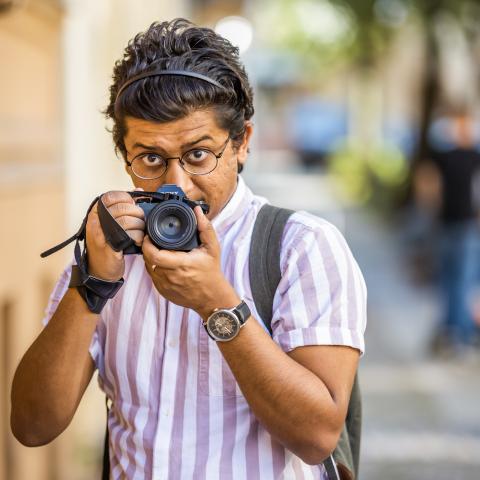Sujatro Ghosh
from India, born in 1993, photographer and video artist and, since November 2019, an MRI-scholarship holder in Berlin.
t was the early summer of 2017 in New York. Sujatro Ghosh was there to take photos for an American aid organization. One evening, sitting in his room, a sort of punchline shot through his head: “Isn’t it absurd that for some years now, cows in India have been protected more and more aggressively against what are often only purported attacks, but women are attacked with even greater aggression, raped and even murdered? Do women need to be cows to be respected?”
Millions of clicks on Instagram
“A woman is raped every 15 minutes in India. There are quite a few official statistics on this. Yet when you look at how few of these acts are punished, it’s sad”, says Ghosh. The young photographer headed out to buy a cow mask at a party shop, returned to his homeland, and launched his “Cow Mask Project”. He photographed women who disguised their faces under the mask in public, in front of the Taj Mahal or at a lake, at train stations or in fields, alone or in crowds. He posted the pictures on social media.
The resonance was overwhelming. “When I posted the first picture on Instagram, it was shared 500 times. After one week there were already 300 media reports about the project in India, and after two weeks it was covered by media all over the world”, he describes. ARD, BBC, Der Spiegel, CNN, France 24 – all wanted interviews and broadcast reports about the young artist and his courageous and far-reaching project. Millions clicked on the pictures on the Internet; women from all over India and from other countries reached out to Ghosh because they wanted to take part in the project.
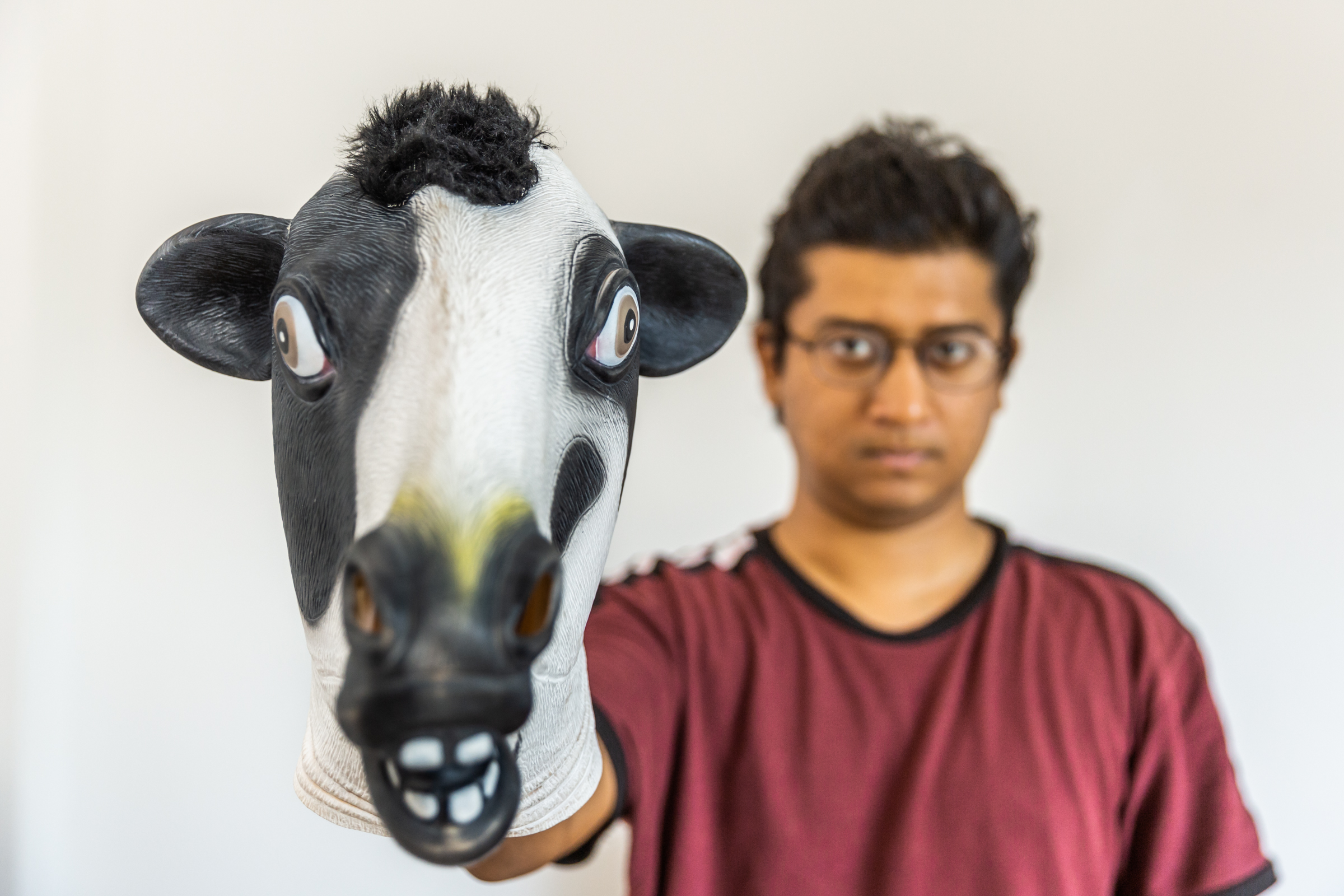
Child of liberal immigrants
Ghosh was born in Calcutta, the capital of West Bengal, into a fourth generation immigrant family. His great-grandfather moved from Bangladesh to Calcutta, when it was still under British colonial rule. As he worked in the public administration, he was able to bring his family to join him. For Ghosh, the metropolis in the east of India meant freedom: “I had a very liberal upbringing and a very mixed circle of friends,” he says. Justice was a big issue, gender equality a matter of course: “The women in my family all worked, both my mother and my grandmother; my grandmother was even a single parent. They all earned their own money and made their own decisions.”
After finishing secondary school, Ghosh studied journalism. He received his bachelor’s degree from the University of Calcutta and his postgraduate degree from Jamia Millia Islamia in New Delhi. He started working as a journalist while still a student, and after graduating he stayed in New Delhi to work as a freelance photographer.
A politically divided society
At the same time, he observed how the country had changed since the Hindu nationalist Bharatiya Janata Party (BJP) was elected as the ruling party in 2014. “Since then everything has been politicised – and thus a wedge has been driven in between Hindus and Muslims,” says Ghosh. Even cows, which are considered sacred by Hindus, now served as a pretext for persecution: self-appointed “cow vigilantes” ensure that the animals are not traded or eaten, and punish people who allegedly violate this commandment – even to the point of murder. Women, on the other hand, cannot hope for a similar freedom from harm.
And so, Ghosh asked a single question loudly and for all the world to hear: Do women need to be cows to be safe? The wave of enthusiasm generated by his message was followed by a flood of hate mail and threatening phone calls. Following a documentary with the Arab TV broadcaster Al Jazeera, Ghosh’s position became so dangerous that the Martin Roth-Initiative made it possible for him to go to Berlin on a scholarship.
The photographer is now a long way from home, but he still wants to continue to take a stance. In a book, for example, and in a new art project: “Geography of Hate”, in which he literally measures the physical and psychological consequences of violence. He wants to go back to India when freedom of expression is once again possible. “Looking at the fanaticism right now, this seems like a distant dream”, he says. “But we have a saying: The farmer lives on hope. So let’s hope.”
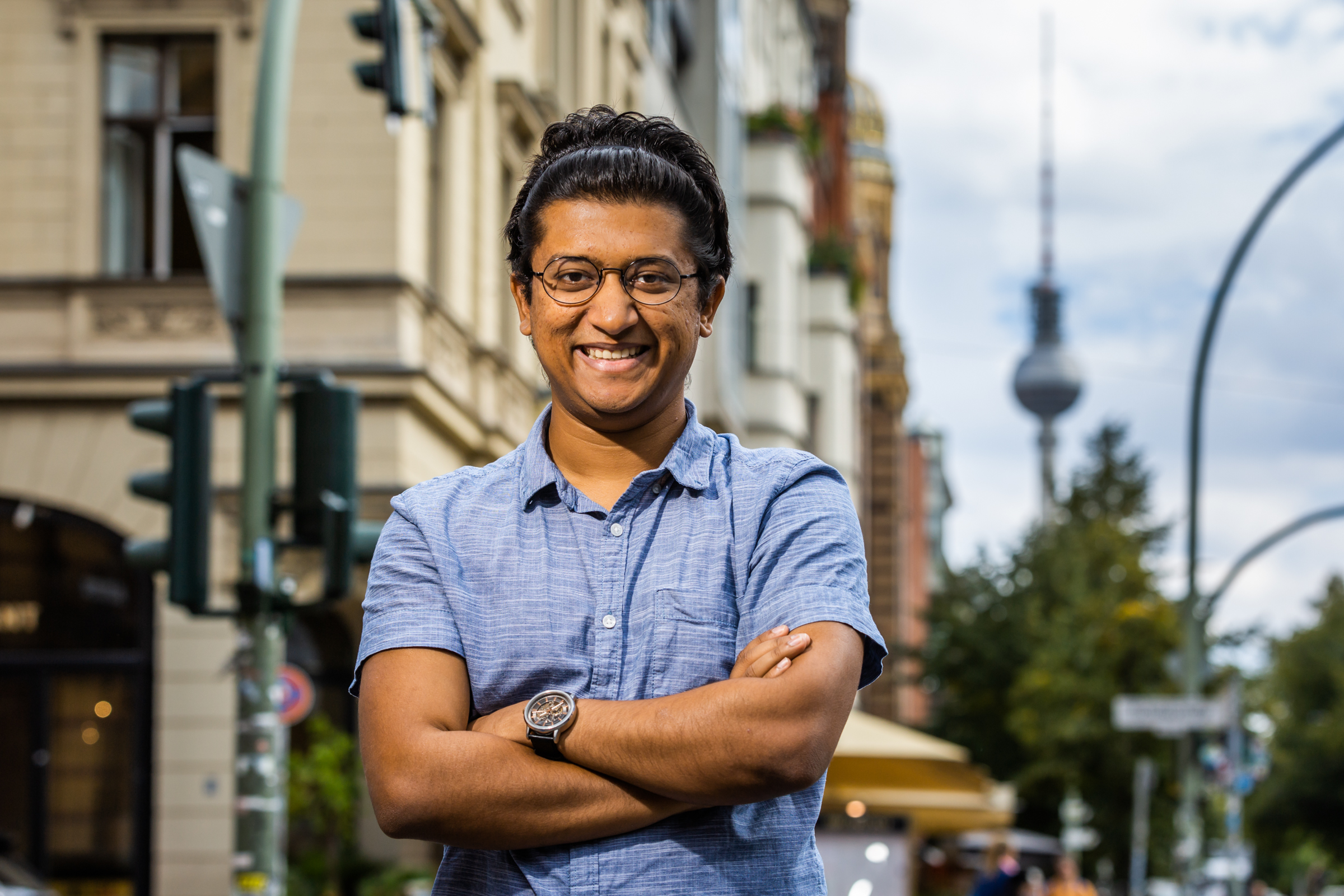
(translated from German into English)
Text: Marion Meyer-Radtke; editing: MRI
Photos/video: Rolf Schulten; used footage/images in Video/Audio slideshow: Sujatro Ghosh
Video/audio slideshow design: Johanna Barnbeck
